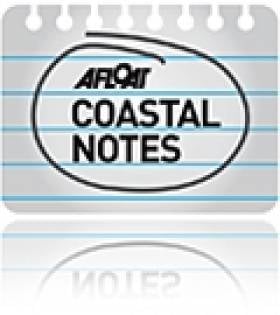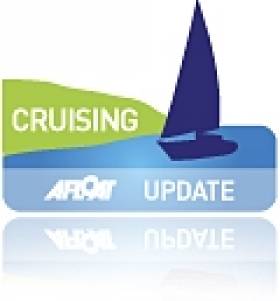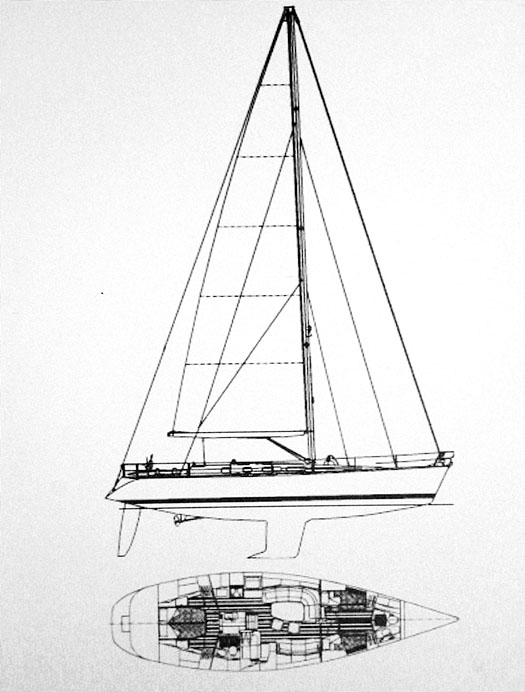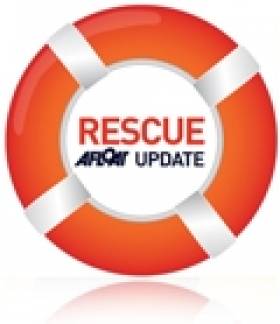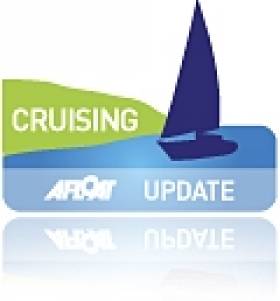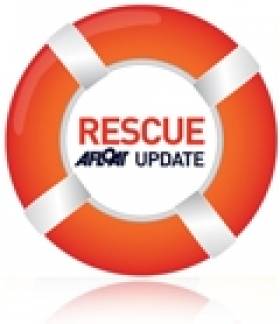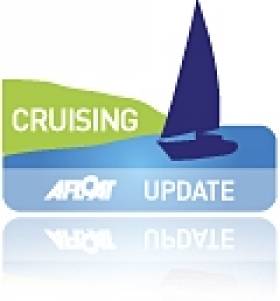Displaying items by tag: Cruising
Beware The British Isles' & Ireland's Hazardous Headlands
#Headlands - Boaters in the British Isles beware - as Motor Boats Monthly has listed some of the most fearsome headlands around the British and Irish coastlines.
This photo gallery details some of the most challenging spots for coastal cruisers - many of which are also these islands' most scenic and picturesque.
Take the rugged beauty of Land's End, where passage in anything but fair weather could be the end of even the most experience mariner.
Or closer to home there's Mizen Head in West Cork, notorious for the more than 80 known wrecks below the surface.
Motor Boats Monthly has more on the story HERE.
#irishcruisingclub – The ICC has just published the 13th edition of its acclaimed Sailing Directions for the South and West Coasts of Ireland. The new book reflects the results of several years' work exploring and surveying the west coast in its entirety, and brings the south coast information up to date as well. The new marinas at Rossaveal, Cork City and in Cork Harbour, and new harbours at Inishmore and Inishmaan, are described, as are 19 anchorages and 13 passages not previously documented. The book is lavishly illustrated, with 156 plans (nine of them new, and the others revised) and 144 aerial and 688 sea level photographs. In his Foreword, Captain Robert McCabe, Director of Operations and Navigation Services at the Irish Lights, says "In 30 years working the coast of Ireland...I have found that the ICC Directions have never failed to deliver practical and accurate assistance. The 2013 offering is truly exceptional."
South and West Coasts of Ireland Sailing Directions, 13th edition, 352 pages A4 softback, ISBN 978 0 9558 199 4 0, price €37.50/£29.95 from booksellers and chandlers, the distributors Todd Chart Services, or direct from www.iccsailingbooks.com
Classic Circumnavigation With a Home-Made Boat
#circumnavigation – A traditional global circumnavigation was celebrated in Dun Laoghaire last night with the award of the Irish Cruising Club's premier trophy, the Faulkner Cup, to Fergus Quinlan of Kinvara on Galway Bay for the log of the third stage of the 40,486 mile global circumnavigation he completed last year with his wife Kay aboard the 12M steel cutter Pylades, a van de Stadt design which he built himself between 1995 and 1997.
Those of us who have stayed on in Ireland to live through the recession should maybe have taken more notice when, around four or five year ago, architects like the skipper of Pylades started finalising plans to take off for the dream cruise, round the world in easy stages until there was a chance there might be some signs of the green shoots of recovery back home. Of all trades, it was the architectural profession which would have been the first to notice that the flamboyant growth of the tiger years was starting to wilt.
A previous decade in which long distance cruising came top of the agenda was the 1930s, when the Great Depression likewise gripped the world. Then about ten year ago when New Zealand was in localised recession, people simply spent more time sailing in what is a sailing paradise. They already had the boats to do it with, now they'd the free time. But as they didn't have the money for fancy new sails and other gear, they made do with the equipment they had. So this upsurge in sailing activity was of little benefit to the marine industry, but by living frugally afloat the people could enjoy themselves, and returned to work refreshed as the economy stared to pick up.
But in any case, when you've built a boat as good as Pylades, long distance voyaging is the only way to go. She's all of a piece, and is yet another manifestation of the versatility of Dutch designer Ricus van de Stadt (1910-1999). A couple of weeks ago, we were discussing his vision in the use of plywood construction with the Black Soo type from 1956, and Zeevalk before that in 1949. But in 1955 he was also ahead of the posse in glassfibre with the appropriately named Pionier 9, one of Europe's first production boats in GRP. Though long out of production, they're still going strong – there's one of them lying to a mooring in Malahide Estuary, just across the channel from the yacht club.
And as you'd expect from a Dutchman, he was tops with steel. The Caribbean 12 design from which Pylades was built is double chine for ease of construction, yet is still a handsome boat of the ideal size – for the life of me I can't see why anyone needs a proper cruising boat to be more than 38ft long.
With Pylades, Fegus and Kay Quinlan have made the ideal circumnavigation, quietly adhering to their own rule of staying with the boat all the way – they didn't do the usual modern thing of flying home from time to time. But they maintained an informative website, and as someone in a creative profession and a traditional musician too, Fergus is a dab hand with the words and the notions, His log is filled with much entertainment and information and the sort of thoughts that come to you on the long ocean passages – did you know, for instance, that continental separation continues at about the same speed as your fingernails grow?
It's the third year running that Pylades has been awarded the Faulkner Cup, which dates back to 1931 but hasn't been taken three times on the trot before, so history was made last night at the ICC AGM. You don't of course "win" cruising trophies, you're awarded them, which quietly deals with the notion that the essence of cruising is its non-competitive nature.
But were it not for cruising awards, we'd have few enough sources of information to trace the development of this branch of sailing, and to inspire others. Yesterday evening the adjudicator Brendan O'Callaghan had to allocate a round dozen cruising achievement trophies, while there were six other special awards by the committee, including the Wright Salver which went posthumously to Mike Balmforth for his remarkable book Cruising Ireland, published last June, while Sean Flood received the Donegan Cup for his tireless work as Ambassador for Sail Training International. Olympic sailor Annalise Murphy and her parents Con Murphy and Cathy McAleavy were awarded the John B Kearney Cup for services to sailing by this very special family whose breadth of involvement in our sport is unrivalled.
Other cruising trophies included the Strangford Cup to Jarlath Cunnane of Mayo for a 4,500 miles venture north of Russia with his much-travelled Northabout, the Atlantic Trophy went to Maire Breathnach of Dungarvan for the transoceanic crossing which completed the circuit of North America by the gaff ketch Young Larry, Paul Butler of Dun Laoghaire took the Round Ireland Cup for his informative account of a classic circuit, Brian Black of Strangford got the Rockabill Trophy for his voyage to Greenland with the 35ft Seafra, and Dickie Gomes (also of Strangford Lough) received the Fingal Cup for the Centenarian 36ft Ainmara's cruise to the Outer Hebrides and Scotland's west coast.
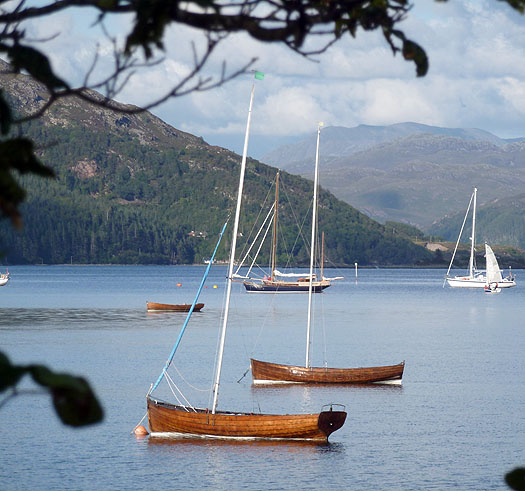
The John B Kearney-designed and built 36ft yawl Ainmara anchored off at Plockton in Wester Ross during her Centenary Cruise to Scotland which was awarded the ICC's Fingal Cup. The club's John B Kearney Cup for Services to Sailing, commemorating Ainmara's renowned designer-builder, was awarded last night to leading Dun Laoghgaire sailing family Con Murphy and Cathy MacAleavy and their daughter, Olympic sailor Annalise Murphy. Photo: W M Nixon
In other cruises, Garry Villiers-Stuart received the Wild Goose Cup for a "pilgrimage voyage" with the 1890-vintage cutter Winifeda of Greenisland, the Marie Trophy for the best cruise by a boat less than 30ft LOA goes to Mick Delap whose gaff cutter North Star is just 24ft long, the Glengarriff Trophy goes to former Fireball champions Adrian and Maeve Bell from Strangford for a cruise in Irish waters which was good despite the weather, the Perry Greer Bowl for a first log goes to Ann Lyons for a cruise among Celts fom Cork eastward, the Wybrants Cup for the best cruise in Scotland goes to Harry Whelehan of Howth whose venture to the Hebrides with the 32ft Sea Dancer found itself providing support for a currach from Kerry delivering an Irish language Bible (the first such apparently) to the religious community at Iona, and the Fortnight Cup for the best cruise in 16 days went to David Williams of Strangford Lough who managed to take the owner-built steel cutter Reiver to southern Brittany, 600 miles in the fortnight, and they got far enough south to be clear of the baleful effects of the jetstream which was blighting the weather over Ireland.

Awarded the Fortnight Cup. The 35ft steel cutter Reiver, to a design by Ian Nicolson of Alfred Mylne, was self-built by David and Peter Williams of Strangford Lough, and launched in 1988.
THE CARIBBEAN 600 SHOW GOES ON
Irish hopes in the RORC Caribbean 600, which starts on Monday from Antigua, received a horrible setback a week ago when Alan McGettigan of Dun Laoghaire's recently-acquired Swan 48 Wolfhound foundered just north of Bermuda. The boat was on a very challenging delivery passage from Connecticut via Bermuda to Antigua to take part in the race, and the crew of four with the owner in command were in no doubt about the scale of the task they faced. But with snowstorm Nemo developing over northeast America, the conditions in the Gulf Stream became extreme, and with multiple systems failures, a rescue by activating the EPIRB became necessary.
Wolfhound was a Swan 48 to this 1994 Frers design.
Nevertheless the sinking of a boat of this quality is extremely unusual, but we'll have to await the word from the crew (the ship which picked them up gets to Gibraltar next Tuesday) to learn if it was impact against the ship which sank Wolfhound. She was one of the Frers designed Swan 48s of which 57 were built between 1995 and 2003. The design was developed as the natural successor to the very successful Sparkman and Stephens-designed Swan 48 which was one of the classics which established the Nautor brand, so although Wolfhound was called a Swan 48, she was in fact just a smidgin under 51ft. This gives her even more Irish interest, as it means that at the time of her building, she was a sort of up-dated production version of Denis Doyle's legendary Moonduster, built by Crosshaven Boatyard in 1981, which was last reported to be based in Norway with an offshore sailing school in Trondheim.
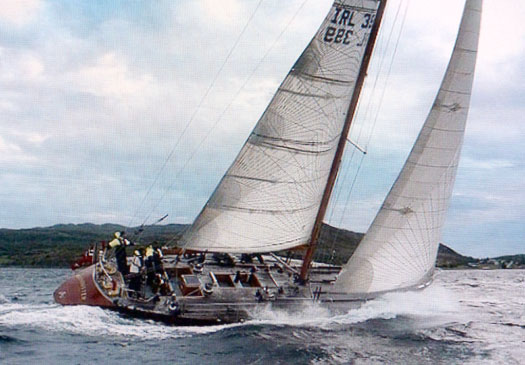
The Duster sails on. Denis Doyle's famous Frers sloop steps out seven years ago near her home port of Trondheim in Norway.
Meanwhile out in Antigua Irish hopes in the Caribbean 600 now rest with Dun Laoghaire's Michael Boyd, Niall Dowling and John Cunningham with the chartered First 40 Lancelot, the Reichel Pugh 78 Whisper skippered by Mark Dicker, and Northern Ireland's Peter Metcalfe in command of the 100ft Liara, though of course American Ron O'Hanley with the highly-fancied Cookson 50 Privateer, will find he immediately reverts to the nationality of his ancestors if Privateer does the good deed.
Defending champion Ran, the JV 72, isn't taking part this year, but her newer near sister Bella Menta (Hap Fauth, USA) is probably the bookies' favourite, though Mike Slade's ubiquitous hundred footer Leopard is on a roll after setting a new record in the Transatlantic race (she was on charter to Nik Zennstrom of Ran who fancied a bit of extra comfort to cross the pond) and can never be ruled out of contention.
NAOMH BAIRBRE AND A SILE NA GIG
The addictive Turas Huiceara on TG4 at 9.30 pm on Thursdays continued this week with Donncha and his hard-working pair of shipmates on the giant Galway Hooker Naomh Bairbre managing to get their enormous mainsail back in action with the new boom made from a tree felled in Stornoway.
Their voyage in search of Gaelic links along the Celtic seaways brought them to the Orkneys where - as suggested here last week - there's little enough trace of the Gael in a Viking-dominated archipelago. But a visit to St Magnus Cathedral, the remarkably fine mediaeval church in the Orcadian capital of Kirkwall, discovered what is apparently the most northerly Sile na Gig, a piece of unsubtle Celtic statuary incorporated into a stone archway.
There is no doubting what this little stone carving is all about - it makes even the most blatant Playboy centrefold seem totally demure by comparison. If this is the image of Irish womanhood being given to the Vikings of Orkney, no wonder they came down here in their hundreds expecting rape and pillage.
Finally heading south, the Naomh Bairbe found her way into the Caledonian Canal, with the site of the Gaelic-destroying Battle of Culloden nearby providing a mournful visit. But such are the demands of a continuous cruising narrative that there wasn't time to put Culloden into perspective, relating it to 1745 and the expedition into Scotland by that world-class messer Bonny Prince Charlie. You could understand, though, why he mightn't be mentioned – it's difficult to be serious about a man named after three sheepdogs.
Going down Loch Ness, there were interesting insights into the survival or otherwise of Gaelic in Scotland, with one speaker making the point that its disappearance means that people aren't really able to properly read the maps of their homeland, as the names of the significant features are all based on Gaelic.
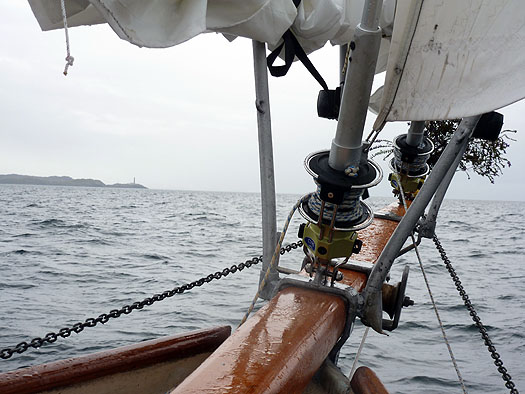
The Gaelic says it all. The Scottish mainland's exposed most westerly point is Ardnamurchan. It means the Headland of the Great Seas – this photo was taken in unusually smooth conditions, with the wind off the land, a rare experience0. Photo: W M Nixon
In fact, both the Clyde Cruising Club Sailing Directions in Scotland, and the ICC books on the Irish coast, make a point of including a large glossary of Gaelic coastal terms, as it does indeed greatly aid in "reading" a coastline. It may be a help to the survival of the old tongue, but on the other hand it simply reinforces Gaelic's featherweight status as no more than a holiday language.
Next Thursday sees the final episode of the Turas Huiceara saga. Whatever about its success as a television programme, it has been a fascinating cruise on an interesting boat, and I can only hope the crew of the Naomh Bairbe start to get some quiet enjoyment as they get nearer to home in Connemara.
Comment on this story?
We like hearing from you! Leave a message in the box below or email William Nixon on [email protected]
Irish Crews Wedding Plans Face Delay as Gale Hits ARC Fleet
#ARCrally – Two Irish boat preparing for a trip of a lifetime on the Atlantic Rally for Cruisers (ARC) have had to delay their plans in Las Palmas but only for 48 hours as gales have postponed the start of the rally for the first time since 1989.
Dun Laoghaire sailor Hugo Karlsson-Smythe together with his family on board the Jeanneau Sun Odyssey 39i the just Nuts! will most likely slip their lines on a 4,500 km passage across the Atlantic Ocean from Las Palmas, Gran Canaria to St. Lucia in the Caribbean on Tuesday.
But when Hugo, Annica and children Axel, Louvisa arrive on the other side the voyage is far from over because they intend to sail a little further south to the island of Petit St. Vincent, where on the 8th of January 2013 (and after a brief sixteen year engagement according to Hugo) Annica and Hugo will tie the knot.
The ARC entry list stands at 227 boats, the majority of which are family cruisers, sailed by family and friends on the adventure of a lifetime. Multihulls are again popular, with 19 booked for the crossing.
A second Irish boat, a Dehler 36 Indulgence skippered by Aidan Heffernan is also in the cruising division.
Because of the strong winds ARC Skippers have been offered choice of departure date
It was announced at yesterday's Skippers' Briefing in Las Palmas that the start of the ARC will be delayed for the cruising divisions.
For the first time since 1989, the start of the ARC has been delayed due to predicted high winds. A low pressure system is predicted to bring winds of 25 knots or more on Sunday night, making uncomfortable conditions in the wind acceleration zone south of Gran Canaria.
Skippers have been offered two start dates; one as planned on Sunday 25, and one on Tuesday 27 November.
The low pressure system is predicted to bring southerly winds of 25 knots or more, with 35 knots plus in the wind acceleration zone to the south of Gran Canaria. Boats are expected to be in this area for their first night at sea on Sunday night, and whilst not unmanageable, the conditions are likely to be uncomfortable for the majority of the family cruising boats.
The announcement was met by spontaneous applause by the assembled 1250 skippers and crew at the briefing.
Skippers were offered the choice of starts; to take the original start on Sunday 25, or a rescheduled start on Tuesday 27 November. The majority elected to wait until Tuesday 27, remaining in habour in Las Palmas while the winds blow through.
Stronger winds do provide ideal conditions for the racing fleet, and these boats are expected to take the start on Sunday, as planned.
'The Gathering' Cruise to Attract 100 Boats for East and South Coast Voyage
#cruising – A 19–day event next July 2013 with 100 cruising boats and 600 crew members will form the Gathering Cruise along the east and south coasts of Ireland.
The Irish Sailing Association (ISA) and the Gathering Ireland 2013 today announced details of the Gathering Cruise 2013. The event aims to bring together a flotilla of yachts from across the UK, Europe and further afield as they sail to Irish ports as part of Gathering Ireland 2013.
The Gathering Cruise, which will commence in Dublin, is expected to continue along the Cork and Kerry coastlines and the Irish Sailing Association hope it will be an opportunity to raise awareness of Ireland's marine tourism infrastructure while profiling Ireland's stunning coastline and coastal towns as a cruising destination for both sail and power boats.
Project Director of The Gathering Ireland 2013 Jim Miley "The Gathering Ireland is delighted to announce this high seas partnership. The sailing community is such an important part of Ireland's tourism industry and this innovative partnership and Gathering Cruise will form a key part of the Gathering Ireland 2013 calendar. The Gathering Cruise also captures what the Gathering Ireland is about- bringing people who have an interest or a link to Ireland in 2013 to be part of it."
Diver Dies After Saltee Islands Incident
#RESCUE - RTÉ News reports that a man has died following a diving accident off the Saltee Islands at the weekend.
The 25-year-old is believed to have rapidly ascended from 25 metres below the surface while on a dive with three others on the morning of Saturday 22 September.
Irish Coast Guard operatives from Waterford and Kilmore Quay were involved in the operation to rescue the man, who was later pronounced dead at Waterford Regional Hospital.
Meanwhile, RTÉ News also reports on the rescue of a man from a burning motor cruiser off the Seven Heads Peninsula in West Cork on Saturday afternoon.
Crew aboard the Naval Service vessel LE Niamh, on patrol in the area, transferred the man from his vessel to Kinsale. The boat later sank after attempts to extinguish the fire.
New Marina at French Ferryport Opens Up Strategic Cruising Potential
#NEW MARINA – Roscoff ferryport built four decades ago and initially used to export produce of a Breton farmer's co-operative to UK markets, through B.A.I then a fledging ferry concern, otherwise known today as Brittany Ferries, is now accompanied by a new 625-berth marina, writes Jehan Ashmore.
The marina at the Port de plaisance Roscoff-Bloscon, is a development of the Chambre de Commerce etd 'Industrie de Morlaix (CCI) and has been operational since June, however the marina's service buildings will not be completed until summer 2013.
Roscoff's position on the French north-west coastline promises to be a major draw to sailors wishing to stop off for a few days on cruising grounds along the French coast, Channel Islands or en-route to somewhere more distant. The port is also an ideal place for sailors as there are numerous islands as well as hidden coves and pretty harbours to discover.
Another advantage is the ferryport's links not just to Plymouth but also to Irish ports, with Irish Ferries running from Rosslare(May-September) and Brittany Ferries as previously reported on Afloat.ie which operates on a longer seasonal service from Cork, from March to November, with this year's final sailing on Saturday 3rd.
Boat-owners across the English Channel will be tempted to moor at the marina on a morepermanent basis,as it is claimed that berthing fees compare very favourably with those available in the UK. For further details of the new marina visit: www.morlaix.cci.fr
German Tourist, Yachtsman Rescued in Separate Boating Incidents
#RESCUE - RTÉ News reports that a German tourist missing after his cruiser ran aground on Lough Ree last night has been found safe and well.
The man was one of three on board the vessel that grounded close to Barley Harbour.
Lough Ree RNLI lifeboat recovered the other two men from the vessel but the third had already left on a dinghy to find help.
He was located by gardaí on an Island in the lough around midnight.
Meanwhile, one person was rescued from a yacht off Hook Head in stormy force seven winds and massive sea swells late last night, according to The Irish Times.
The man, who was reportedly the only person on board the yacht, was airlifted to safety by UK search and rescue helicopter.
RNLI adds:
Lough Ree RNLI rescued two German men from a cruiser that ran aground north of Priests Island close to Barley Harbour in County Longford yesterday evening (Wednesday).
The charity's volunteer crew based at Coosan Point in Athlone launched their inshore lifeboat at 8.45pm (Wednesday 15 August) following a report that a vessel had got into difficulty on the lough on the River Shannon.
A major search and rescue operation involving Lough Ree RNLI, Lough Ree Rescue, Athlone Sub Aqua Club and the Sligo Coast Guard helicopter Rescue 118 was mounted in conditions described at the time as windy, with a force six wind having prevailed throughout the day.
A third man who had left the cruiser and boarded a dinghy to raise the alarm was reported missing.
Lough Ree RNLI located the cruiser and arrived on scene within 20-25 minutes where lifeboat crew including Kieran Sloyan, Lee Carney and Donal Heraghty removed the two German men from their vessel.
They were then put on the lifeboat and brought safely ashore to Lanesborough where they were met by Gardai.
Lough Ree RNLI then resumed a search for the third man with the other search and rescue agencies.
He was subsequently located safe and well around midnight on Cloone Skert by Gardai who had heard shouts from the shore at north Portrunny in Roscommon.
Lough Ree Lifeboat Operations Manager Damian Delaney said: 'The three tourists particularly the man who had left the boat to look for assistance were very lucky as weather conditions were pretty severe at the time. Thankfully, there was a good co-ordinated response and a good turnout of people which resulted in a positive outcome. As time went on and it got dark and darker we were very concerned for the third man so it was great that he was brought ashore.'
#trailersailer – Ireland's coastline is one of the world's finest cruising grounds. Yet there are long lengths of the coast that rarely see a visiting cruiser. It is not that the area is inhospitable, although the weather can be challenging. Safe anchorages and sheltered harbours are numerous, the welcome on shore is legendary. The plain fact is that, for many of us the west coast of Ireland is very much the Far West.
A circumnavigation of the island is over 700 miles, roughly the same distance as the Fastnet Race, longer than the Sydney-Hobart, or the Newport-Bermuda. For the East Coast cruising sailor with a fortnight to spare Wales, Cornwall or Scotland are nearer, and, in the prevailing westerlies, easier to reach. Cork sailors can explore West Cork or South Kerry, but a trip to Galway is a serious voyage, with a long stretch of coast offering little or no shelter.
Any plan to develop cruising from Cork to Donegal must take account of the distances involved. One solution would be to develop marinas and encourage boat owners to keep their boat there for all or part of the year. However, maintaining a boat that is several hours drive from home is never easy. Those who are fortunate to keep boats in France, Portugal or elsewhere can depend on a well developed network of professionals, with workshops in the harbour area, to carry out necessary work. Unfortunately, marinas in Ireland are conceived more as a pretext to develop shore-side housing, rather than as essential industrial infrastructure. Boatyards and luxury apartments do not make good neighbours!
Basing the boat on the west coast for a month or two is no less problematic. Finding a window of opportunity, and the crew, for the delivery trip there and back, is never easy. A 300 mile cruise is, for many, already a summer holiday in itself! Furthermore, sailors can be reluctant to abandon the short but intense racing season, especially on the East Coast.
There is an alternative: the trailer-sailer, or, as well known nautical author Sam Llewelyn prefers – the "Minimum Boat". For an owner wishing to explore the nooks and crannies of the Irish coast such boats have huge advantages. The ability to tow a boat to a suitable area greatly extends the range of possible cruising grounds. The flexibility of such a mobile boat means that plans can be changed easily. You may have planned a weekend trip to the Aran Islands, but if the forecast is for squalls, rain and a huge swell it is no great problem to divert to Lough Derg, or even to "go foreign" and explore Lough Erne. How often is it set to rain in Kerry while Donegal basks in sunshine (or vice versa). Until you choose which exit to take off the motorway, the "Minimum Boat" owner is not committed to any one destination.
In addition, a ferry trip to Cherbourg or Roscoff opens up the whole of Europe. Personally I quite fancy exploring the Venice Lagoon or the Skerries of the northern Baltic.
In choosing a "Minimum Boat" compromises have to be made, between the boats nautical capacities, convenience when rigging, launching and recovering and the trappings of modern comforts. Many commonly used boats are no longer than 21-22 foot, and no more than 2 tons. Increasingly water ballast is used, reducing the towing weight, making it possible to tow and launch somewhat larger boats.
Obviously, a boat this size will not have standing headroom throughout. Farewell the power shower, the microwave and the master cabin. However, there is great pleasure in rediscovering the little luxuries – making that first tea or coffee whilst still in your sleeping bag, stepping ashore from the bow of the boat on a sheltered beach or settling down for the night in an anchorage known only to those that go to sea in kayaks or RIBs. Not forgetting that keeping the boat in the garden is a great convenience when maintenance is required.
Cruising on boats this size is more about exploring the coast and the islands, rather than passage making. In fact the whole point of the trailer-sailer is that long passages are made by road. The most difficult moments of any holiday will be launching and recovery. Many cars can cope with towing a fairly substantial boat. However, slipways are often narrow and steep. Alexander Nimmo and his fellow engineers of the 19th Century singularly failed to take account of the constraints of launching a small yacht from a road trailer when engaged in building so many harbours, piers and slips that are still the backbone of our nautical infrastructure. If a Minimum Boater has to rely on launching only at well-equipped boatyards or clubs then the range of accessible cruising areas is limited.
A major contribution to the development of trailer sailing could be made at little cost:
⁃ by publishing a comprehensive list of slipways, including details such as the angle of the slip (preferably between 7° and 12°), launching conditions and information on safe parking;
⁃ identifying a local tractor owner who would, for a small charge, tow the trailer down the slip. Ideally, they would also be able to offer safe parking for for car and trailer. Trailer-sailors would be happy to pay for such a service. Obviously, there will be considerations of liability and insurance, but in a period when small farmers, building contractors and other small businesses are facing difficulties, launching and recovering could provide a small but useful revenue stream.
To conclude by an (apocryphal) example:
Sitting in the bar of a well-known yacht club club in Greater Dublin two boat owners are discussing the possibility of viewing from the comfort of their own cockpit the in-port race in Galway Bay when the VOR fleet is in town. One owns a well-found 35 ft yacht that competes in local races. His owner reckons that in order to be sure of getting to Galway in time, and get the boat back, he will take a fortnight's holiday. He already organising a delivery crew, one for each trip, there and back, with the family driving down for the weekend. It is proving difficult to find a berth in Galway and he may have to anchor off somewhere.
His friend has a French-built 21 foot trailer-sailer that has proved competitive in club racing, and did well when he towed the boat to the UK to compete in Cowes Week. His plan is to lift out on Thursday evening after racing and drive down early Friday morning. He intends to launch in Kinvara, having checked the slip on Google Earth, and sail across to Galway. When he called the organisers they told him they would have no problem finding a berth for such a tiny yacht! The in-port race is on Saturday. The plan is to party in Galway on Saturday and sail back to Kinvara on Sunday. With HW just after 2130 there will be no problem getting back to Dublin sometime (possibly late) on Sunday night.
Small is beautiful. More to the point a small trailer friendly yacht is the passport to spending more time in some of the world's most spectacular seascapes – Magheramore
Philip Scully
#CRUISING – Long term captain and Cork harbour yachtsman Philip Scully (55) of Crosshaven has died while on passage from Antigua in the West Indies to the UK it was reported earlier today.
The Owner of Starry Night, the well travelled Oyster 82, has advised of the sudden death on board of the long term captain Philip Scully.
According to reports, the yacht was on its way to the UK from Antigua when Philip started feeling unwell. He and the crew had full time support from Dr Spike Briggs of Medical Support Offshore Limited (MSOS) and advanced medical supplies and equipment on board. Despite this and great efforts from the crew he died in the early hours of 22nd May.
As the sad news broke at Royal Cork Yacht Club senior member Donal McClement (who is cruising in Spain) led tributes to the professional sailor. "He was a consummate professional, always careful and fastidious. Any owner who had him as a skipper had the most reliable and trustworthy guy you could possibly have".
Former Admiral Hugh Mockler spoke about Philip's love of Cork Harbour and Crosshaven in particular. "Philip always took the opportunity to sail back into Crosshaven whenever he got the chance".
The rest of the crew onboard Starry Night are well and the weather conditions are good.
The yacht is now on its way to Bermuda and relevant authorities have been informed.
Philip had connections with Irish sailing as far back as the One Ton Cup in the 1980s. He was also previously skipper of the late Bernie Cahill's Oyster yachts that were based in Schull, West Cork.

Philip Scully. Photo: Bob Bateman


























